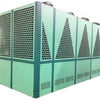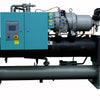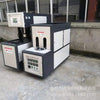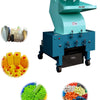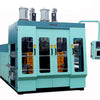The 1.8L Extrusion Blow Molding Machine: Engineering Efficiency for High-Volume Small Container Production
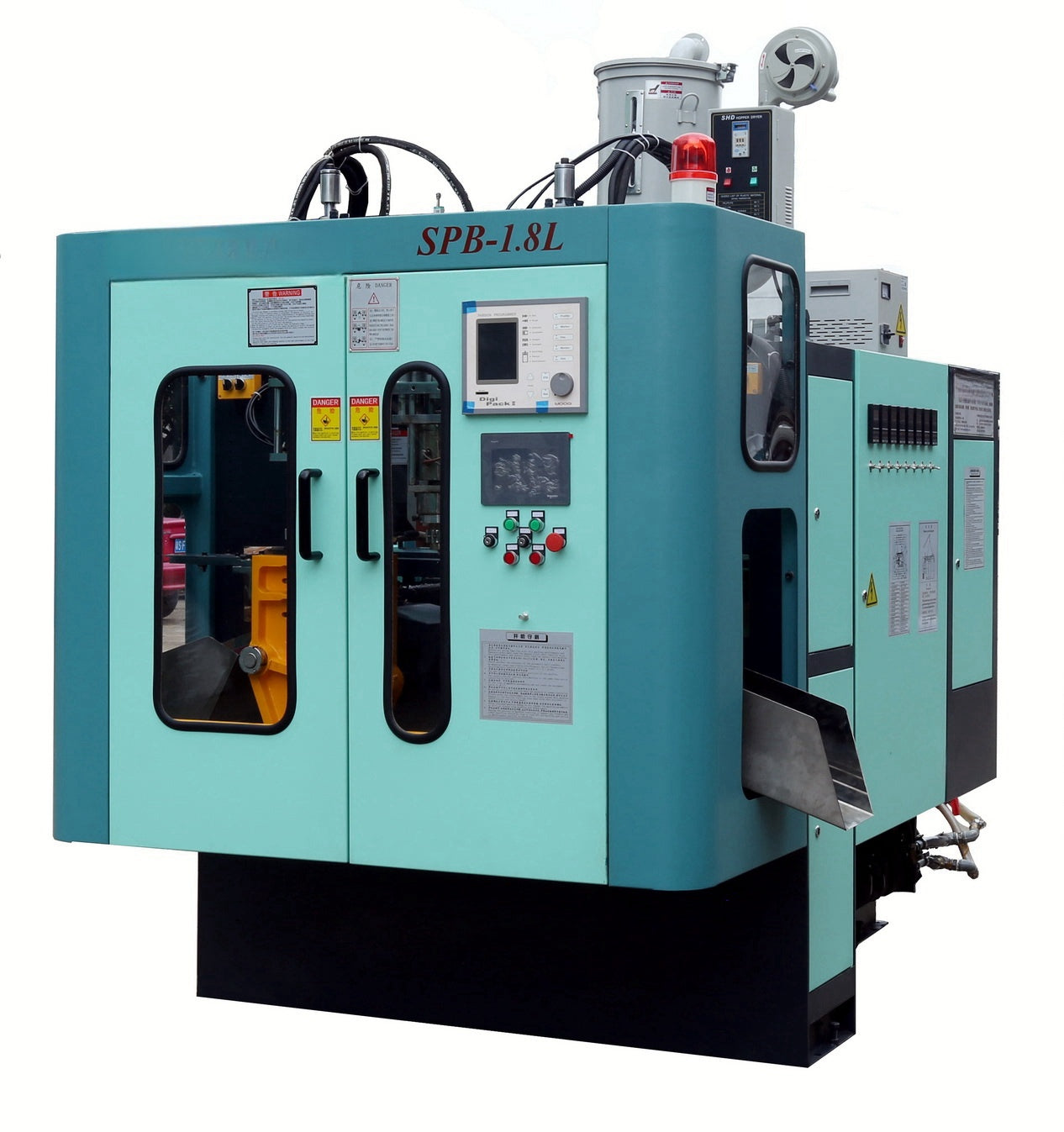
1. Introduction Extrusion Blow Molding (EBM) is a cornerstone technology in the global plastics industry, responsible for manufacturing a vast array of hollow containers. While machines are available for capacities ranging from milliliters to hundreds of liters, the 1.8L class represents a sweet spot for high-volume production of everyday consumer packaging. These machines are designed to bridge the gap between small, ultra-high-precision containers (often made via injection blow molding) and larger industrial vessels, offering an optimal balance of speed, tooling cost, and flexibility. This paper focuses on the specific design, operation, and technological advancements of the 1.8L EBM machine, highlighting how its engineering addresses the unique challenges of producing small containers at scale, including precise material distribution, rapid cycle times, and stringent quality requirements for sectors like pharmaceuticals and cosmetics.
2. Machine Architecture and Core Components A modern 1.8L EBM machine is a highly integrated system designed for speed and reliability. Its core components work in a tightly synchronized cycle.
-
2.1. Extruder Unit: The process begins with a single-screw extruder, optimized for rapid melting and homogenization of plastic pellets. Common materials include High-Density Polyethylene (HDPE), Polypropylene (PP), Polyvinyl Chloride (PVC), and Polyethylene Terephthalate Glycol (PETG), chosen for their clarity, chemical resistance, or barrier properties depending on the application. The screw design is typically tailored for high throughput at lower torque, suitable for the smaller parison volumes required for 1.8L containers.
-
2.2. Parison Die Head: The molten plastic is forced through a precision die head to form a continuous, tubular parison. For 1.8L machines, die heads are often designed for high-speed operation and can be configured for single-layer or multi-layer co-extrusion (up to 6 layers, as noted in industry specifications [1]), enabling the production of containers with enhanced barrier properties or aesthetic effects. The die head is the focal point for wall thickness control.
-
2.3. Clamping and Mold Unit: This unit is designed for rapid, high-frequency operation. It features a robust clamping mechanism (often using 3 or 4 tie-bars for stability [1]) that can quickly close around the extruded parison, sealing it at the bottom. Molds are typically multi-cavity (ranging from 1 to 12 cavities [1]), allowing for the simultaneous production of multiple containers per cycle, which is essential for achieving the high daily outputs (e.g., 12,000 to 86,000 units [1]) characteristic of this machine class. The mold is equipped with efficient cooling channels to rapidly solidify the thin walls of small containers.
-
2.4. Blow Pin and Air System: Immediately after mold closure, a blow pin enters the neck area of the parison. Compressed air is injected, inflating the parison to conform to the mold cavity. The air pressure and timing are precisely controlled to ensure complete filling without over-stretching the often-thin material of small containers.
-
2.5. Take-Out, Trimming, and Auxiliary Systems: After cooling, the mold opens, and an automated take-out system removes the containers. Integrated trimming units (e.g., rotary neck cutters [1]) precisely remove flash from the top and bottom. Advanced machines often include optional features like In-Mold Labeling (IML) for direct decoration [1], automatic flash recycling systems that grind and re-feed scrap material [2], and conveyor belts for seamless downstream handling.
3. Advanced Process Control: The Heart of Quality and Efficiency The defining feature of a modern 1.8L EBM machine is its sophisticated control system, which is crucial for managing the high speeds and ensuring consistent quality.
-
3.1. Parison Wall Thickness Control (PWTC): Achieving uniform wall thickness in small, complex containers is paramount. Modern 1.8L machines employ multi-point, servo-controlled PWTC systems. These systems dynamically adjust the die gap during parison extrusion, allowing operators to program specific thickness profiles for different axial zones of the container. This ensures material is strategically placed where it is needed most (e.g., thicker at the base for stability, thinner on the sidewalls for material savings), leading to stronger, lighter, and more cost-effective products.
-
3.2. Drive System Technology: To support high-speed, energy-efficient operation, 1.8L machines utilize advanced drive systems:
- Hybrid Servo-Drive Systems: Combine the power of hydraulics with the precision and efficiency of electric servo motors for critical movements like clamping and parison control [1].
- High-Performance Hydraulic Systems with Proportional Valves: Offer precise, closed-loop control of hydraulic functions, reducing energy waste compared to traditional on/off valves [1].
- All-Electric Systems (Emerging Trend): Provide the highest precision, cleanliness, and energy efficiency, making them ideal for sensitive applications like pharmaceuticals.
4. Operational Workflow and High-Speed Cycle The operation of a 1.8L EBM machine is characterized by its rapid, continuous cycle, essential for high-volume production.
- Extrusion & Parison Formation: The extruder continuously produces a molten parison of the programmed thickness profile.
- Mold Closure & Sealing: The mold closes rapidly around the parison, pinching it off.
- Blow Molding & Cooling: Air is injected to inflate the parison, which is then cooled and solidified within seconds.
- Mold Opening & Ejection: The mold opens, and finished containers are ejected.
- Trimming & Handling: Flash is automatically trimmed, and containers are conveyed away. Simultaneously, any scrap is often recycled back into the process [2].
- Cycle Repeat: The entire process repeats in a matter of seconds, enabling the high production rates these machines are known for.
5. Material Versatility and Key Applications The 1.8L EBM machine's flexibility in handling various materials makes it indispensable across multiple industries.
-
5.1. Material Compatibility:
- PE/PP: Ideal for chemical resistance, used in detergent bottles, shampoo containers, and food packaging.
- PETG: Valued for its high clarity and toughness, perfect for premium cosmetic bottles, perfume containers, and medical packaging [1].
- PVC: Used for its rigidity and clarity in specific applications.
- Co-extrusion: Allows for multi-layer structures, combining properties like barrier protection (for oxygen or moisture) with cost-effective structural layers.
-
5.2. Primary Market Applications:
- Pharmaceuticals & Healthcare: Bottles for syrups, pills, and medical solutions, where precision and cleanliness are critical [1].
- Cosmetics & Personal Care: High-clarity bottles for lotions, perfumes, and serums, often using PETG for premium aesthetics [1].
- Food & Beverage: Bottles for juices, sauces, edible oils, and dairy products (e.g., milk bottles).
- Household Chemicals: Containers for cleaners, detergents, and fabric softeners.
- Other Consumer Goods: Packaging for toys, hotel amenities, and nutritional supplements [1].
6. Energy Efficiency and Sustainability Features Modern 1.8L machines are designed with sustainability in mind, incorporating technologies to minimize their environmental impact.
- 6.1. Efficient Drive Systems: As mentioned, hybrid servo and proportional hydraulic systems significantly reduce energy consumption compared to older, fixed-speed hydraulic machines.
- 6.2. Integrated Recycling: The automatic flash recycling system [2] is a key sustainability feature. It grinds production scrap (flash and off-spec parts) and feeds it directly back into the extruder, minimizing virgin material waste and reducing overall production costs.
- 6.3. Optimized Cooling: Efficient mold cooling designs reduce cycle times and the energy required for temperature control.
7. Challenges and Future Directions While highly efficient, the technology continues to evolve to meet new demands.
-
7.1. Current Challenges:
- Precision Limits: While excellent for its class, EBM may still lag behind injection blow molding for containers requiring micron-level dimensional precision.
- Material Waste: Although recycling mitigates it, the inherent flash generation remains a characteristic of the process.
-
7.2. Future Trends:
- Increased Automation & IIoT: Greater integration with smart factory systems for real-time monitoring, predictive maintenance, and fully automated quality control.
- Dominance of All-Electric Drives: The shift towards all-electric machines will accelerate, offering superior precision, lower noise, and zero hydraulic oil, making them ideal for cleanroom environments.
- Advanced Materials: Development of machines capable of processing new, sustainable bio-based and biodegradable resins.
- AI and Machine Learning: Implementation of AI to optimize parison profiles and process parameters in real-time based on sensor data, further pushing the boundaries of quality and efficiency.
8. Conclusion The 1.8L extrusion blow molding machine is a marvel of modern manufacturing engineering, perfectly optimized for the high-speed, high-volume production of small plastic containers that are ubiquitous in daily life. Its success is built on a foundation of robust, high-frequency mechanical systems—extruder, die head, multi-cavity mold, and clamping unit—orchestrated by intelligent electronic controls. The integration of multi-point parison wall thickness control and energy-efficient hybrid or servo-driven systems allows manufacturers to produce containers that are not only consistent and high-quality but also material-efficient and cost-effective. Its versatility in handling a wide range of materials (PE, PP, PVC, PETG) and its adaptability to various industries—from life-saving pharmaceuticals to luxury cosmetics—cements its role as an indispensable tool in the global packaging landscape. As the industry moves towards greater automation, sustainability, and precision, the 1.8L EBM machine will continue to evolve, remaining at the forefront of efficient and responsible plastic container production.

